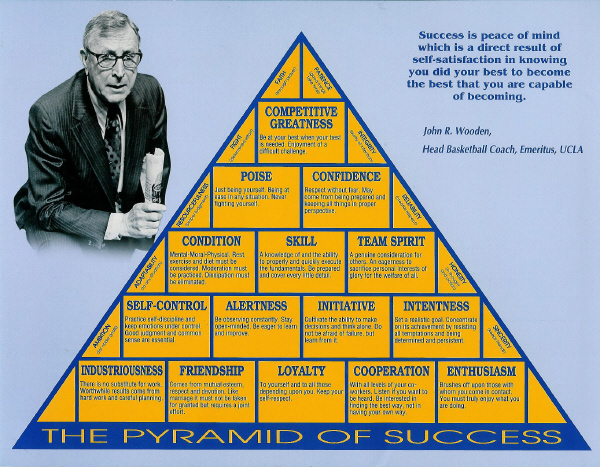
There are so many successful leaders in current society and history. The majority of them are male leaders while a small proportions are female leaders. Although the number of women leaders in society is continuously increasing, there are still too few women in senior public sector leadership roles. Hillary Clinton, as a representative, is a successful leader in different ways.
There are many reasons prevent women from becoming good leaders. The first reason is that having babies puts women at a disadvantage. Only women can have babies. Last year, 72% of married or cohabiting mothers and 60% of lone mothers with dependent children had a job. Other than pregnant process, women still have to look after their children. The second reason is that some women just don’t have senior position.Some women do decide not to progress all the way to the very top of their organizations, for a wide range of reasons, including a desire to have a work/life balance.

A study by economists Donna K. Ginther and Shulamit Kahn found that women are less likely than men to pursue tenure-track positions in science but that the gender gap in such positions can be explained by fertility decisions. That is, women in science are less likely to move up the academic job ladder after their early postdoctorate years if they have children. The next reason is that there are structural impediments preventing women from reaching the top. Another problem to consider is that gender discrimination is still happening. According to the AAUW, “Some bias against women is subtle, but overt—and illegal—discrimination against women in the workplace remains an issue.”
Leaders, especially political leaders, are expected to have traditionally male characteristics such as rationality, charisma and assertiveness. Perhaps that’s why Indira Gandhi was a powerhouse in India for so long. She demonstrated the male characteristics people expected from the leader.
 In 2008 Hillary Clinton ran for U.S. president. It was a courageous move, even for a woman who has not exactly played it safe.Over the years, and often in full view of a nation, she has developed an admirable ability to face adversity, get knocked down and bounce back. She has a strong track record for staying positive and optimistic, and operating with a sense of purpose and intention through difficult times. She is resilient.
In 2008 Hillary Clinton ran for U.S. president. It was a courageous move, even for a woman who has not exactly played it safe.Over the years, and often in full view of a nation, she has developed an admirable ability to face adversity, get knocked down and bounce back. She has a strong track record for staying positive and optimistic, and operating with a sense of purpose and intention through difficult times. She is resilient.
Hillary Clinton hasn’t just taken on a presidential campaign; she’s also taken on the hopes and expectations of women around the world. It’s a huge load to bear.
Reference:
Shambaugh, R. (2010, June 21). Leadership Secrets Of Hillary Clinton. Retrieved April 19, 2016, from http://www.forbes.com/2010/06/21/hillary-clinton-leadership-lessons-resilience-forbes-woman-leadership-communication-connection.html
Dominici, F., Fried, L. P., & Zener, S. L. (n.d.). So Few Women Leaders. Retrieved April 19, 2016, from http://www.aaup.org/article/so-few-women-leaders#.Vxa4wcdQy0g







 A boss is a leader and a leader is also a leader. It is true that great bosses tend to also be great leaders and a great leader can also be a great boss. If you’re already a good boss, you know how much work goes into that role. With a few adjustments, you can rocket past good to great–and take your employees and organization with you and you are a great boss or a great leader. But still there are some differences between a boss and a leader in ways they manage companies and people. Let’s make a comparison of them.
A boss is a leader and a leader is also a leader. It is true that great bosses tend to also be great leaders and a great leader can also be a great boss. If you’re already a good boss, you know how much work goes into that role. With a few adjustments, you can rocket past good to great–and take your employees and organization with you and you are a great boss or a great leader. But still there are some differences between a boss and a leader in ways they manage companies and people. Let’s make a comparison of them.

 If you often help those around you navigate their rough patches, you are a leader.People count on you. If people rely on you, trust you because you hold yourself accountable and demonstrate the responsibility that leads others to trust you, you are a leader.You’re a good listener and people confide in you. Being able to listen to others, having people speak to you frankly without worrying about who you’ll tell or how you might use that knowledge against them, are signs of strong leadership.
If you often help those around you navigate their rough patches, you are a leader.People count on you. If people rely on you, trust you because you hold yourself accountable and demonstrate the responsibility that leads others to trust you, you are a leader.You’re a good listener and people confide in you. Being able to listen to others, having people speak to you frankly without worrying about who you’ll tell or how you might use that knowledge against them, are signs of strong leadership.





 Simon Sinek, in his lecture on: How great leaders inspire action, explains his discovery he made between 2005 and 2006–the secret of why great leaders are able to inspire everyone to take action. He finds that all of those successful leaders think, act and communicate the exact same way, the way that is completely opposite to others. They start with why to how to what while other think in the way of what, how and why. He explains this idea with a chart of three circles with why in the core, what in the outer circle and how in the middle. He calls this chart the golden circle. He notices that the normal people think and act from the outside in while the great minds from the inside out. He says that when doing something “everyone know what to do, some knows how to do, but very few people know why do what they do.”
Simon Sinek, in his lecture on: How great leaders inspire action, explains his discovery he made between 2005 and 2006–the secret of why great leaders are able to inspire everyone to take action. He finds that all of those successful leaders think, act and communicate the exact same way, the way that is completely opposite to others. They start with why to how to what while other think in the way of what, how and why. He explains this idea with a chart of three circles with why in the core, what in the outer circle and how in the middle. He calls this chart the golden circle. He notices that the normal people think and act from the outside in while the great minds from the inside out. He says that when doing something “everyone know what to do, some knows how to do, but very few people know why do what they do.”
 Some of management scientists suggest that the competitions and classification of staff are the most powerful method for activating staff’s strength. And many management practitioners also think that staff has no career motivation without the classification.
Some of management scientists suggest that the competitions and classification of staff are the most powerful method for activating staff’s strength. And many management practitioners also think that staff has no career motivation without the classification.